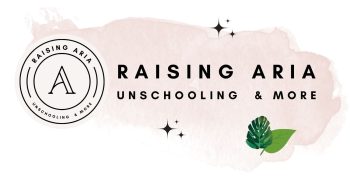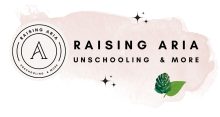Montessori child led learning is an educational approach that places emphasis on allowing children to take an active role in their learning process. It is based on the teachings of Dr. Maria Montessori, an Italian physician and educator, who believed that children have a natural desire to explore, learn, and develop at their own pace.
The Montessori method encourages self-directed learning, independence, and the development of critical thinking skills.
Key Principles of Montessori Child-Led Learning At Home

Implementing child-led learning in a Montessori-at-home setting requires understanding and applying key principles that align with the Montessori philosophy. Here are the essential principles of child-led learning for Montessori at home:
Prepared Environment
Create a carefully prepared environment that is conducive to exploration and independence. Arrange learning materials and activities on low, accessible shelves.
Use Montessori-inspired educational materials that are designed to engage children’s senses and foster self-correction.
Freedom of Choice
Offer your child a range of age-appropriate activities and materials. Allow them to choose what they want to work on, providing opportunities for self-directed learning. This freedom of choice empowers children to take responsibility for their learning journey.
Follow the Child
Observe your child’s interests and learning preferences. Based on their cues, introduce activities and topics that align with their natural curiosity. Be open to adapting the environment and resources to match their changing interests.
Hands-On Learning
Incorporate hands-on learning experiences that engage all the senses. Montessori materials are specifically designed to promote active exploration and self-guided discovery. These materials encourage children to learn through direct experience and manipulation.
Mixed-Age Grouping
If you have multiple children at home, encourage interaction and collaboration among different age groups. Mixed-age settings promote peer learning, empathy, and social skills development.
Role of the Adult
As the parent or caregiver, assume the role of a guide or facilitator. Offer support and guidance when needed, but avoid interfering with the child’s independent exploration. Trust your child’s abilities to make choices and learn through their own experiences.
Order and Structure
Maintain order and structure in the learning environment. Keep the space organised and uncluttered to create a calm and focused atmosphere for learning.
Respect for Concentration
Encourage uninterrupted periods of focused exploration. Respect your child’s concentration and avoid interrupting them during their work or play.
Real-Life Experiences
Integrate real-life experiences into learning. Involve your child in everyday activities, such as cooking, cleaning, and gardening. These practical life experiences develop essential skills and foster a sense of responsibility.
Observation and Reflection
Continuously observe your child’s interests, progress, and challenges. Reflect on their learning journey and use this information to adjust the learning environment and activities accordingly.
By implementing these Montessori principles, you create an enriching Montessori environment at home, allowing your child to thrive and develop a love for learning through child-led exploration and discovery.
Remember that Montessori education is a journey, and each child’s path is unique.
Embrace the process, celebrate their accomplishments, and cherish the wonders of child-led learning.
Benefits of Montessori Child-Led Learning
Research and studies have highlighted several benefits of Montessori child-led learning:
- Improved Academic Performance: Children who engage in self-directed learning tend to develop a deeper understanding of concepts and retain knowledge better (1).
- Enhanced Critical Thinking and Problem-Solving Skills: Child-led learning encourages children to be curious, ask questions, and find solutions independently (2).
- Increased Intrinsic Motivation: Children are more motivated to learn when they are pursuing their interests, leading to a love for lifelong learning (3).
- Social and Emotional Development: Montessori mixed-age classrooms foster a sense of community and promote social interactions, empathy, and cooperation (4).
- Nurturing Independence: Children in a child-led learning environment learn to make choices and take responsibility for their learning, leading to increased self-confidence and independence (5).
Tips to Implement Child Led Learning At Home
Implementing child-led learning into busy lives requires thoughtful planning and a commitment to creating an environment that fosters exploration and independence. Here are some practical steps you can take to incorporate child-led learning into your daily routines:
- Observe and Identify Interests: Take time to observe your child’s interests and passions. Pay attention to what captivates their attention, what activities they enjoy, and what topics they ask questions about. Understanding their interests will help you tailor learning experiences to their preferences.
- Integrate Child-Led Learning Into Daily Activities: Child-led learning doesn’t have to be limited to formal study sessions. It can be integrated into everyday activities. For example, if your child shows an interest in plants, take them on a nature walk and talk about the different flora you encounter.
- Create a Learning Space: Designate a specific area in your home as a learning space. Fill it with age-appropriate books, art supplies, educational toys, and other materials that align with your child’s interests. This space will serve as an inviting environment for them to explore and learn independently.
- Offer Freedom of Choice: Give your child choices in their learning journey. Allow them to decide which books to read, what activities to engage in, and which projects to pursue. The freedom of choice will enhance their sense of ownership and motivation.
- Set Aside Unstructured Time: Busy schedules can be overwhelming for children and may limit their opportunities for self-directed learning. Set aside regular periods of unstructured time where your child can explore their interests without time constraints.
- Involve Children in Decision Making: Engage your child in discussions about their learning goals and interests. Ask them what they would like to learn or explore next. Involving them in the decision-making process empowers them to take an active role in their education.
- Be a Learning Facilitator: As a parent or educator, your role is to facilitate your child’s learning journey. Offer guidance, encouragement, and support when needed. Be available to answer their questions and engage in meaningful conversations.
- Embrace Learning Opportunities Everywhere: Child-led learning can happen anywhere. Take advantage of teachable moments in daily life, such as during cooking, shopping, or exploring a new place. Encourage your child to ask questions and seek answers together.
- Join Learning Communities: Connect with like-minded parents or educators who value child-led learning. Join local or online learning communities where you can exchange ideas, resources, and experiences.
- Be Patient and Flexible: Child-led learning is a process that requires patience and flexibility. Your child’s interests may change over time, and that’s okay. Adapt your approach accordingly and be open to exploring new topics and activities.
Remember, the key to successful child-led learning is to follow your child’s lead, trust their natural curiosity, and create a supportive and nurturing environment that encourages exploration and self-discovery.
Even in busy lives, there are plenty of opportunities to embrace child-led learning and witness the wonders of your child’s educational journey.
References:
- Lillard, A. S. (2005). Montessori: The Science behind the Genius. Oxford University Press.
- Rathunde, K., & Csikszentmihalyi, M. (2006). The Developing Person: An Experiential Perspective on the Ontogenesis of Psychological Complexity. In R. M. Lerner (Ed.), Handbook of Child Psychology (6th ed., pp. 324–365). John Wiley & Sons.
- Hidi, S., & Renninger, K. A. (2006). The Four-Phase Model of Interest Development. Educational Psychologist, 41(2), 111–127.
- Duffy, C., & Crosby, M. (2016). The Design and Organization of Environments for Early Childhood: Theory and Practice. Teachers College Press.
- Lillard, A. S., & Else-Quest, N. (2006). Evaluating Montessori Education. Science, 313(5795), 1893-1894.
Please note that while these references provide valuable insights into Montessori child-led learning, further research and reading will offer a more comprehensive understanding of this educational approach.










